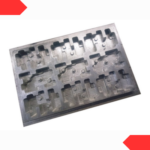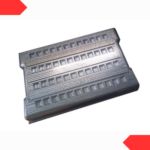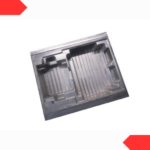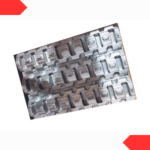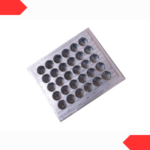Vacuum Formed Moulds
A Computerized Vertical Milling Center (VMC) is a precision machining tool used in the manufacturing industry for creating metal parts and molds. It offers numerous advantages in terms of versatility, precision, speed, and efficiency. In this comprehensive description, we will explore the various applications and advantages of a computerized VMC in detail.
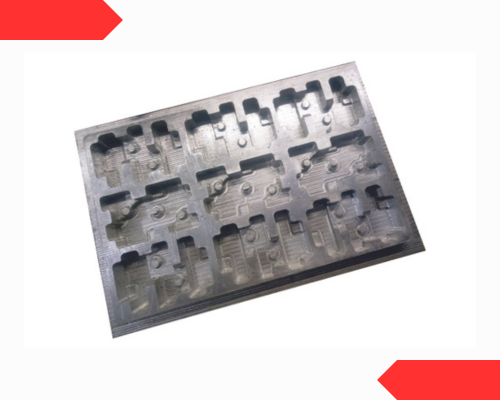
Applications:
Prototyping:
One of the primary applications of a computerized VMC is in prototyping. It enables manufacturers to quickly and accurately produce prototypes of metal parts and molds. This allows for testing and validation before mass production, helping to identify and resolve design flaws or improve functionality. Prototyping with a VMC reduces lead times and costs associated with traditional prototyping methods.
Production of Metal Parts
Computerized VMCs are extensively used for the production of metal parts across various industries. Whether it’s automotive, aerospace, medical, or consumer goods, a VMC can create complex and precise components with high accuracy. These parts can include gears, brackets, housings, shafts, and many other components required in the manufacturing process.
Mold Making:
A computerized VMC is also employed in the creation of molds for plastic injection molding, die casting, and other molding processes. It can accurately machine the mold cavities and cores, ensuring precise dimensions and surface finishes. This allows for the production of high-quality molds capable of producing consistent and accurate parts.
Tool and Die Making:
VMCs are extensively used in tool and die making industries. They are capable of manufacturing various types of cutting tools, dies, jigs, and fixtures. These tools are essential for machining, forming, and assembling metal parts in industries such as automotive, aerospace, and machinery. The precise machining capabilities of a VMC ensure the production of reliable and efficient tools
Medical and Dental Applications:
Computerized VMCs find applications in the medical and dental industries for the production of implants, surgical instruments, prosthetics, and dental molds. The high precision and accuracy of a VMC allow for the creation of intricate and customized medical devices that fit patients’ specific needs. This enables improved patient outcomes and advances in medical and dental treatments.
Advantages:
Precision and Accuracy:
One of the key advantages of a computerized VMC is its ability to achieve high levels of precision and accuracy. It can machine complex geometries with tight tolerances, ensuring the produced parts and molds meet the desired specifications. This level of precision is crucial for industries where even minor deviations can affect performance or functionality.
Versatility and Flexibility:
Computerized VMCs offer versatility and flexibility in machining a wide range of materials, including various metals and plastics. They can handle different part sizes and shapes, making them suitable for both small and large-scale production. The VMC’s multi-axis capability allows for complex machining operations, including 3D contouring and multi-sided machining.
Efficiency and Productivity:
VMCs are known for their efficiency and productivity. With their computerized controls and automated tool changing systems, they can perform machining operations rapidly, reducing production cycle times. Additionally, VMCs can operate continuously, requiring minimal manual intervention, which maximizes productivity and minimizes downtime.
Enhanced Surface Finish:
Computerized VMCs can achieve superior surface finishes on machined parts and molds. They can use various cutting tools and techniques to achieve smooth and precise surface textures. This is crucial for industries where surface finish plays a vital role in the final product’s appearance, functionality, or performance.
Cost Savings:
While the initial investment in a computerized VMC may be significant, it can result in long-term cost savings. VMCs offer high production efficiency, reducing labor costs and minimizing material waste. The accuracy and precision of the machining process also reduce the need of re-inspection repeatedly.

